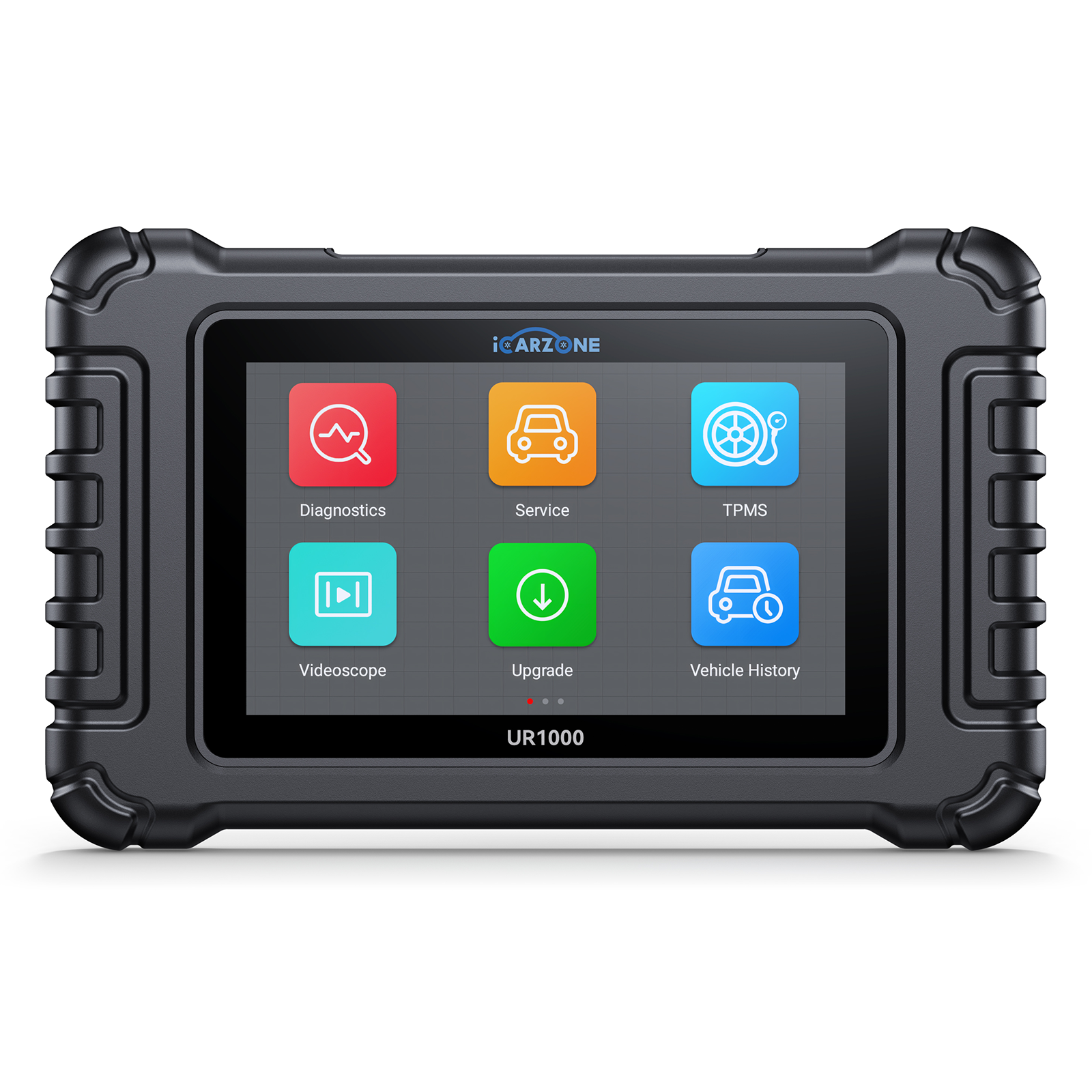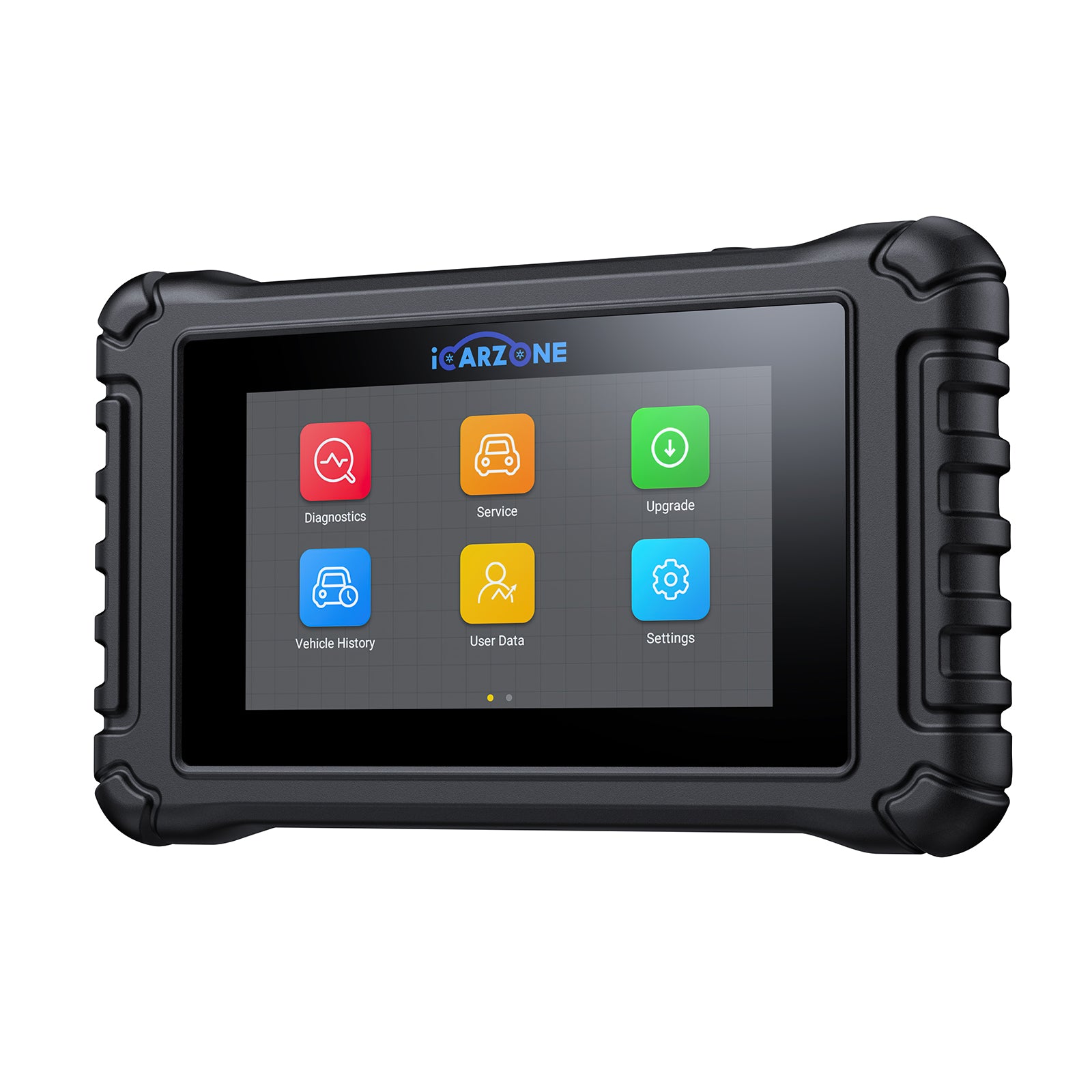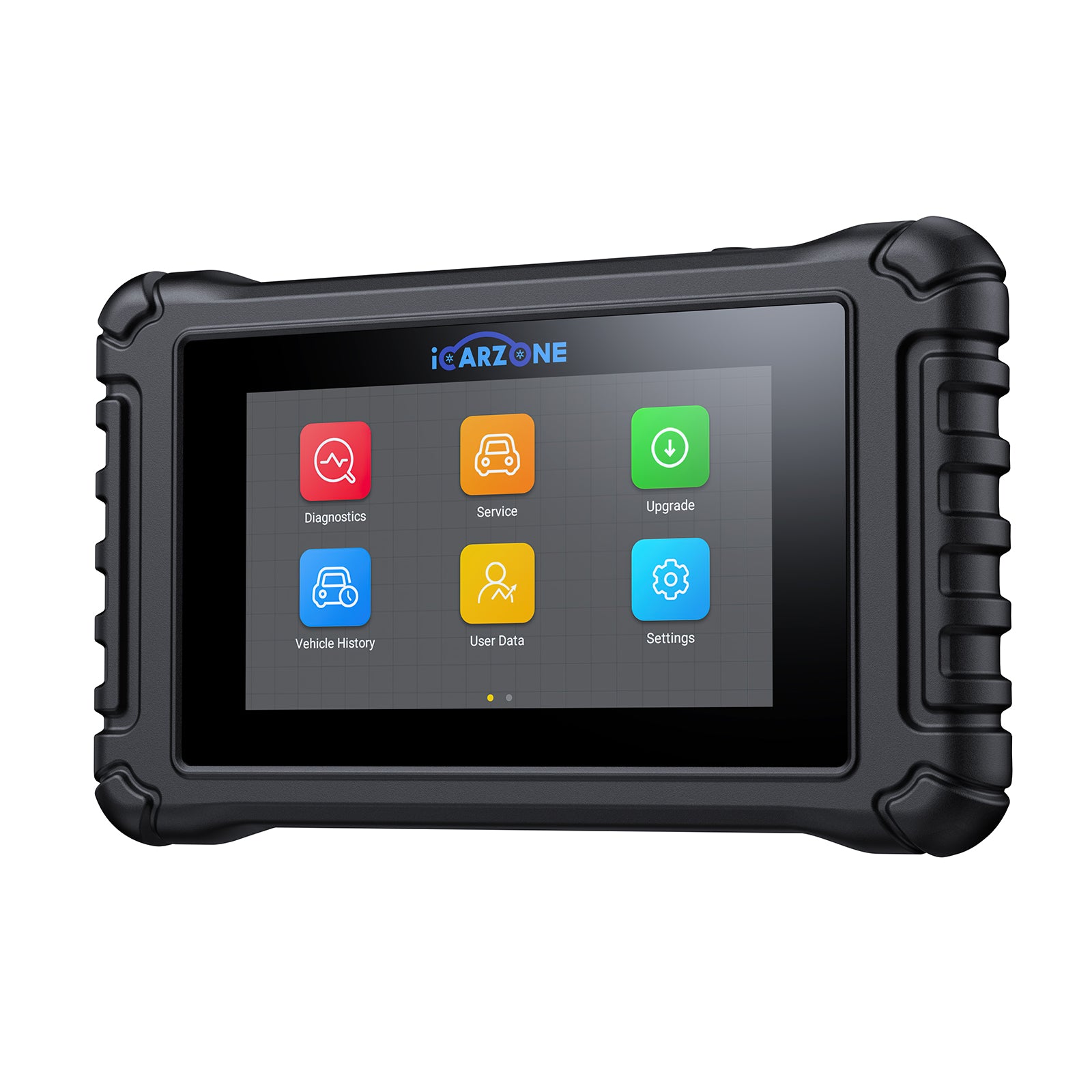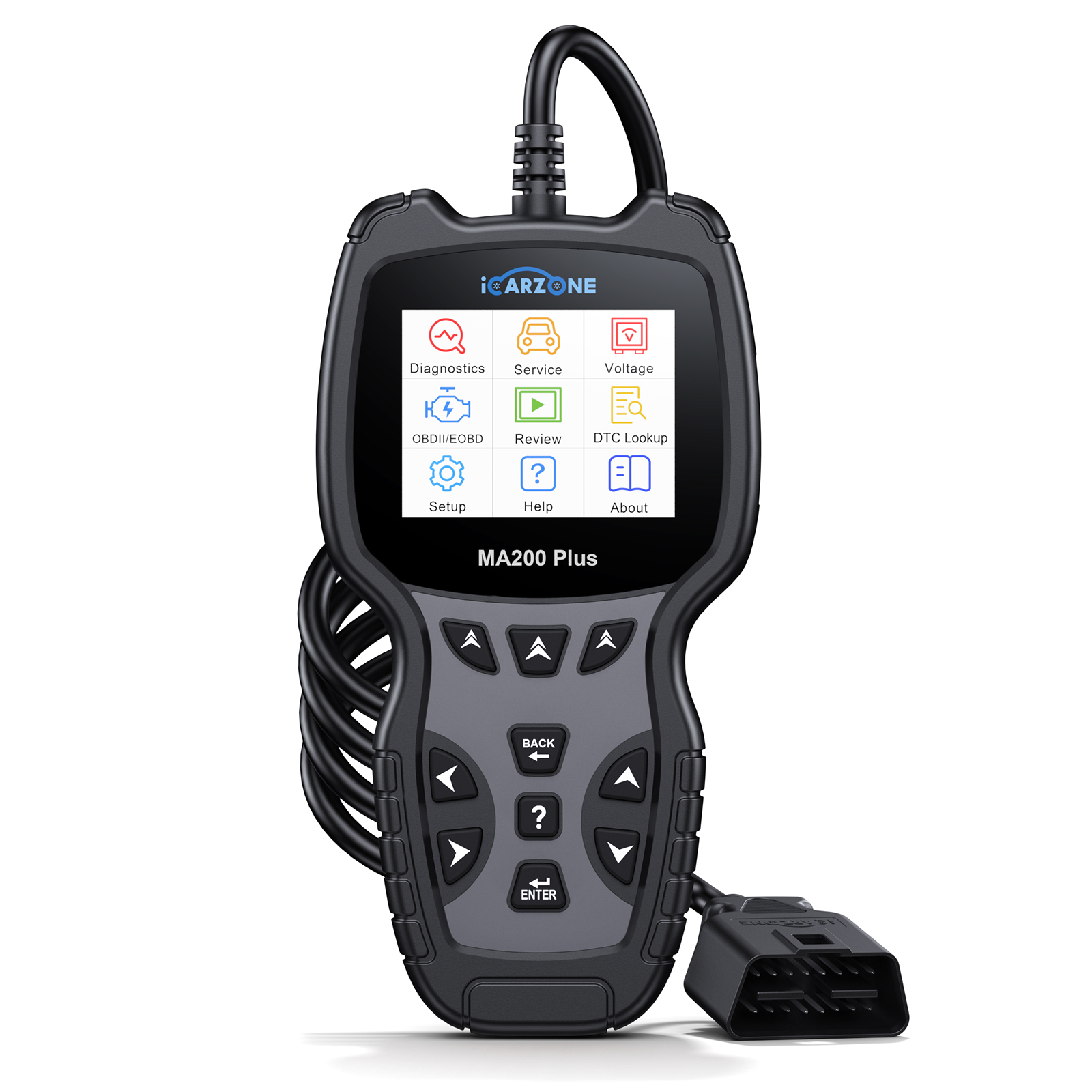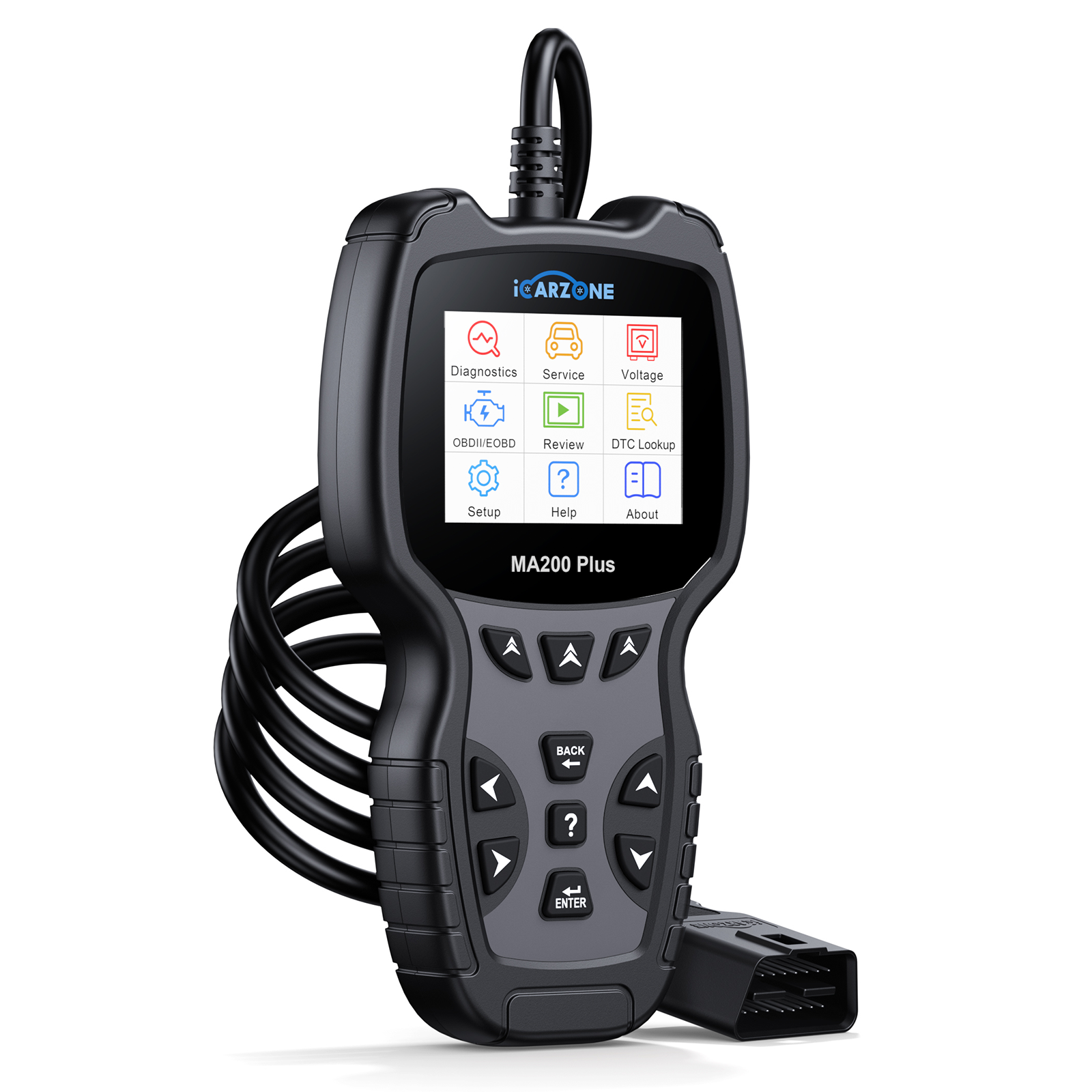P0138 Code in Honda Civic: Fix Downstream O2 Sensor with ICARZONE MA900
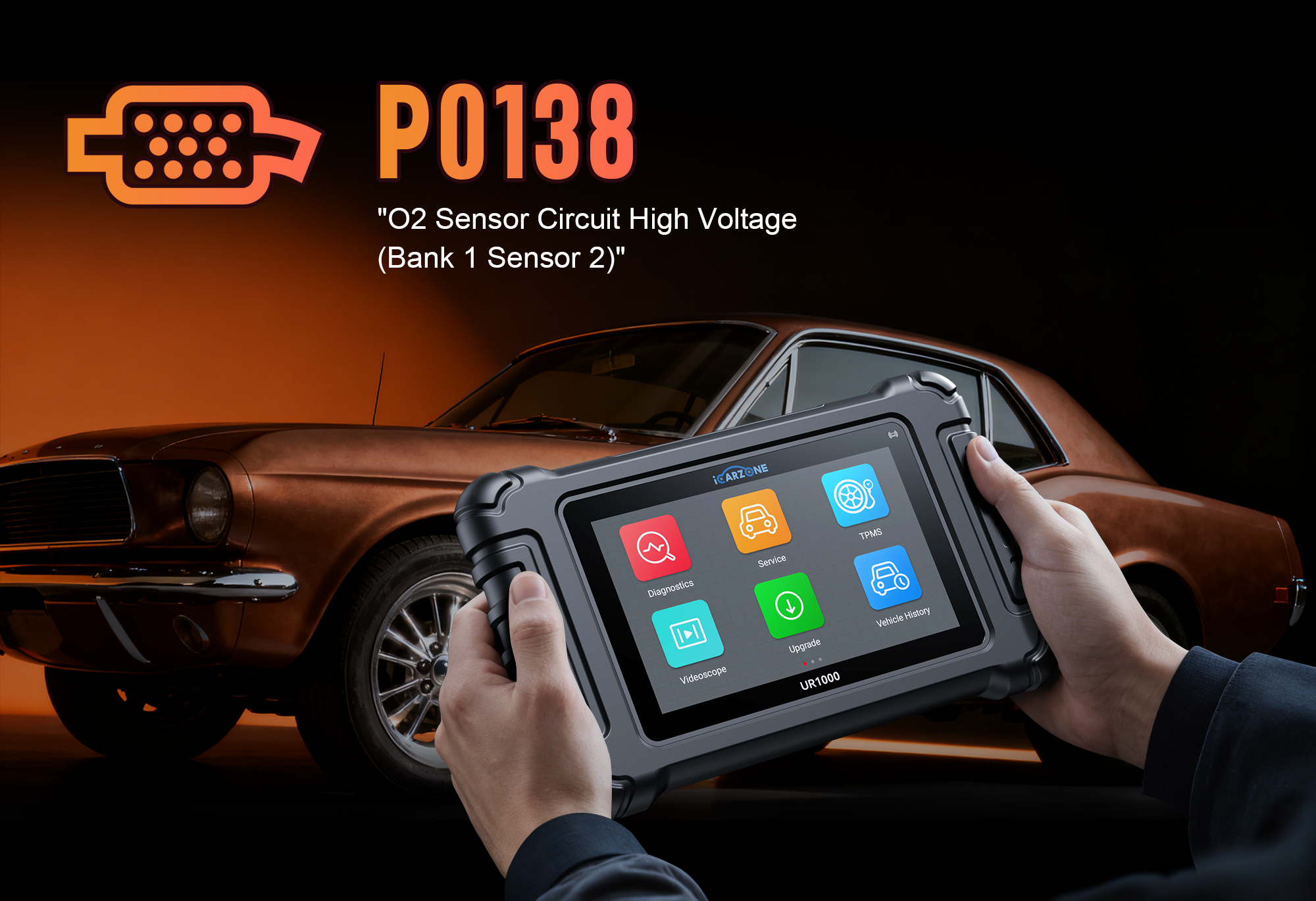
Solve downstream oxygen sensor issues in 2016-2024 Civic (1.5T, 2.0L, Hybrid). Diagnose & repair with MA900's Honda-specific tools.
Fix P0138 with MA900 Now1. What is P0138 in Honda Civic?
P0138 is an OBD-II Diagnostic Trouble Code indicating Oxygen Sensor Circuit High Voltage (Bank 1, Sensor 2). For the Honda Civic—one of the best-selling compact cars globally—this code targets the downstream oxygen sensor: the unit mounted after the catalytic converter (unlike P0132, which affects the upstream sensor before the cat).
Civic’s engine management system relies on this downstream sensor to monitor catalytic converter efficiency. It sends voltage signals (typically 0.1V–0.9V) to the ECU; P0138 triggers when voltage stays above 1.0V for 10+ seconds. This is critical for 2016+ Civics—especially 1.5T models—because a faulty downstream sensor can hide catalyst damage and cause emissions test failures.

2. Common Causes in 2016-2024 Honda Civic
Failing Downstream O2 Sensor (2019 Civic EX 1.5T) — A 2019 EX owner with 62,000 miles noticed a steady Check Engine Light. MA900’s Oxygen Sensor Response Test showed voltage stuck at 1.2V (normal: 0.1–0.9V). The sensor’s heating element failed—common in 1.5T Civics due to high exhaust temps. Replacing with OEM sensor #36532-5LA-A01 restored normal operation.Wiring Harness Damage (2018 Civic Si 1.5T) — A 2018 Si owner’s P0138 appeared after track day use. MA900’s Circuit Continuity Test found a short between the sensor wire and exhaust manifold. The harness (routed too close to the turbo in Si models) had melted insulation. Repairing with heat-resistant wiring (per TSB 19-082) fixed the short.Exhaust Leak (2020 Civic LX 2.0L) — A 2020 LX owner experienced intermittent P0138. MA900’s Exhaust Leak Detection identified a gap at the catalytic converter flange. Road vibrations had loosened the bolts, allowing fresh air into the exhaust (falsely triggering high voltage). Tightening the flange and replacing the gasket eliminated the code.Catalytic Converter Failure (2017 Civic Hybrid) — A 2017 Hybrid owner’s P0138 was paired with reduced fuel efficiency. MA900’s Catalyst Efficiency Test showed the cat wasn’t reducing emissions. The hybrid’s frequent stop-and-go use had degraded the catalyst, causing unburned fuel to reach the sensor. Replacing the cat and sensor resolved the issue.ECU Calibration Issue (2022 Civic Touring 1.5T) — A 2022 Touring owner’s P0138 appeared after a software update. MA900’s Honda TSB Lookup found TSB 22-045, which fixed overly sensitive sensor thresholds in early 2022 Civics. Updating the ECU with MA900 cleared the false code.

3. Key Symptoms in Honda Civic
Performance & Efficiency Symptoms
- Steady Check Engine Light (not flashing)
- Fuel economy drop (1–3 MPG, noticeable in 1.5T models)
- Intermittent rough idle (more common in hybrid variants)
- Strong exhaust odor (unburned fuel)
- 2016+ Civics: "Emissions System Problem" message on dash
Sensor & System Symptoms
- Downstream sensor voltage stuck above 1.0V (via MA900 live data)
- Failed emissions tests (high NOx or hydrocarbon levels)
- Symptoms worsening in hot weather (sensor overheating)
- 1.5T models: Turbo lag increase (indirect effect of poor fuel trim)
- Hybrid Civics: Reduced EV mode activation
4. Civic Engines/Trims Prone to P0138
Honda service data highlights these 2016-2024 Civic configurations with highest P0138 incidence:
| Engine | Model Years | Civic Trims | % of P0138 Cases | Primary Risk Factor |
|---|---|---|---|---|
| 1.5T Turbo (L15B7) | 2016–2021 | EX, EX-L, Si, Touring | 52% | High exhaust temps damaging sensor/wiring (TSB 19-082) |
| 2.0L Naturally Aspirated (R20Z1) | 2016–2024 | LX, Sport | 28% | Exhaust flange leaks from road vibrations |
| 1.5L Hybrid (LFA1) | 2020–2024 | Hybrid, Hybrid Touring | 15% | Catalyst degradation from stop-and-go use |
| 1.5T Turbo (L15CA) | 2022–2024 | EX, EX-L, Si, Type R | 5% | Early ECU calibration issues (TSB 22-045) |
5. Diagnostic Steps with ICARZONE MA900
Step Action with MA900 Civic-Specific Goal Pass/Fail Criteria 1 Full System Scan > Select "Honda" > "Civic" > "Engine Control Unit" Confirm P0138 + check for related codes (P0137, P0420, P0430) Pass: Isolated P0138 | Fail: Multiple codes (signals catalyst failure) 2 Live Data > "Oxygen Sensor Monitoring" Track Bank 1 Sensor 2 voltage at idle + 2,000 RPM Pass: Voltage fluctuates 0.1–0.9V | Fail: Stuck above 1.0V 3 Sensor Tests > "Oxygen Sensor Response Test" Verify sensor reacts to throttle changes (Civic 1.5T: test under load) Pass: Voltage changes within 0.5s of throttle input | Fail: No response 4 Electrical Tests > "Circuit Continuity Test" Check wiring between sensor and ECU (Civic 1.5T: inspect near turbo) Pass: Continuity present (resistance <5Ω) | Fail: Open/short circuit 5 Service Functions > "Honda TSB Lookup" Enter Civic’s VIN to check for applicable TSBs (19-082, 22-045) Pass: No relevant TSB | Fail: TSB applies (follow Honda’s fix)
Case Example: A 2019 Civic Si 1.5T failed Step 2 (voltage stuck at 1.3V) and Step 4 (short circuit). MA900’s Honda Component Location showed the downstream sensor behind the catalytic converter. Inspection revealed melted wiring (consistent with TSB 19-082). Repairing the harness and replacing the sensor fixed P0138.
Start Diagnosing with MA9006. Fixes for Civic's P0138
Resolve P0138 in your Civic with these MA900-verified fixes—tailored to specific causes:
1. Replace Downstream Oxygen Sensor
- Confirm sensor failure via MA900’s Oxygen Sensor Test.
- Locate the sensor (Civic-specific positions):
- 1.5T/2.0L: Behind catalytic converter, driver’s side exhaust pipe
- Hybrid: Under rear floor pan, near muffler
- Disconnect battery + let exhaust cool (30+ minutes).
- Remove sensor using a 7/8" oxygen sensor socket (use penetrating oil if stuck).
- Install OEM sensor with anti-seize (avoid sensor element):
- 2016–2021 1.5T: #36532-5LA-A01
- 2016–2024 2.0L: #36532-5AA-A01
- 2020–2024 Hybrid: #36532-5RA-A01
- Torque to 30 ft-lbs, reconnect battery, and clear codes with MA900.
2. Repair Wiring Harness (1.5T Models)
- Use MA900’s Circuit Test to find damaged sections (focus near turbo).
- For TSB 19-082 compliance:
- Replace damaged wire with heat-resistant 18-gauge wiring
- Install heat shield (#32720-5LA-000) around harness
- Secure wiring 2+ inches from exhaust components
- Solder connections + use heat-shrink tubing (Honda-recommended: 125°C rating).
- Verify repair with MA900’s continuity test before reassembly.
3. Fix Exhaust Leaks
- Identify leaks with MA900’s Exhaust Leak Detection (check flange between cat and muffler).
- For 2.0L Civics:
- Remove and clean flange surfaces
- Replace gasket with #18215-5AA-A00
- Torque bolts to 22 ft-lbs (sequence: crisscross)
- Test drive and recheck with MA900 to confirm leak is fixed.
7. Repair Costs & Maintenance Tips
Civic P0138 repair costs vary by cause—use this table to budget:
| Repair Type | DIY Parts Cost | Professional Repair Cost | Civic Models Affected |
|---|---|---|---|
| Downstream O2 Sensor Replacement | $65–$120 (OEM) | $180–$280 (parts + 1hr labor) | All models (1.5T most common) |
| Wiring Harness Repair (TSB 19-082) | $30–$60 (wire + heat shield) | $250–$350 (parts + 1.5hr labor) | 2016–2021 1.5T |
| Exhaust Flange Repair | $15–$30 (gasket + hardware) | $120–$200 (parts + 1hr labor) | 2016–2024 2.0L |
| Catalytic Converter Replacement | $400–$800 (OEM) | $1,200–$1,800 (parts + 2hr labor) | 2020–2024 Hybrid |
| ECU Software Update (TSB 22-045) | $0 (with MA900) | $150–$200 (dealer fee) | 2022–2024 1.5T |
| DIY Diagnosis with MA900 | $0 (one-time tool investment) | $130–$180 (dealer diagnostic fee) | All models |
Maintenance Tips for Civic Owners
- 1.5T Civics (2016–2021): Inspect downstream sensor wiring every 30,000 miles (per TSB 19-082).
- All models: Use only Honda-recommended oil (0W-20 full synthetic for 1.5T/hybrid, 5W-30 for 2.0L) to prevent catalyst damage.
- 2.0L Civics: Tighten exhaust flange bolts every 20,000 miles to prevent leaks.
- Hybrid Civics: Take monthly highway drives (20+ miles) to clean the catalyst.
- Perform MA900’s Oxygen Sensor Health Check quarterly to catch issues early.
8. Preventive Maintenance for Civic
Avoid P0138 in your Civic with these Honda-recommended steps:
-
Sensor Care:
- For 1.5T models: Install aftermarket heat shield (#32720-5LA-000) if not already fitted
- Replace downstream sensor every 100,000 miles (preventive for 1.5T)
- Clean sensor connector annually with dielectric grease to prevent corrosion
-
Exhaust System Maintenance:
- Inspect exhaust flanges for leaks during oil changes
- Replace exhaust gaskets every 60,000 miles (2.0L Civics)
- Avoid driving over potholes at high speeds (prevents flange damage)
-
Engine Care:
- Change oil every 5,000 miles (1.5T) or 7,500 miles (2.0L/hybrid)
- Use top-tier gasoline (91+ octane for 1.5T Si/Type R)
- For hybrids: Avoid letting fuel level drop below 1/4 tank (prevents catalyst damage)
-
Software Updates:
- Check for ECU updates quarterly with MA900
- Install TSB-related updates immediately (especially 19-082, 22-045)
9. Civic-Specific FAQs
Yes, but only short-term. P0138 doesn’t cause immediate damage, but prolonged driving can hide catalyst failure (costing $1,000+ to replace). Fix within 1–2 weeks.
Honda’s 1.5T engine produces higher exhaust temps than expected. The original sensor wiring was routed too close to the turbo, causing insulation melting (fixed by TSB 19-082).
We recommend OEM sensors—aftermarket units often fail within 6–12 months in Civics. Honda’s OE sensors are calibrated for the 1.5T’s unique exhaust characteristics.
Yes—MA900 fully supports 2024 Civic models (including Type R) with Honda’s latest diagnostic protocols for the 1.5T (L15CA) engine.
10. Summary
P0138 (downstream O2 sensor high voltage) is a common issue in 2016–2024 Honda Civics—especially 1.5T models affected by high exhaust temps (TSB 19-082). Left unaddressed, it can cause catalyst damage, reduced MPG, and emissions failures.
The ICARZONE MA900 simplifies diagnosis with Honda-specific tools: it verifies sensor health, detects wiring shorts, and identifies TSB fixes. Most P0138 cases are resolved with a $65–$120 OEM sensor replacement—avoiding costly dealer repairs. By following preventive steps (heat shields, regular inspections), Civic owners can keep their sensors working reliably.
Fix P0138 in Your Honda Civic with ICARZONE MA900
MA900 includes Civic-specific O2 sensor tests, TSB lookup, and ECU updates—perfect for 1.5T, 2.0L, and Hybrid models. Diagnose & repair like a pro, no dealer visit needed.

© 2025 iCarzone. All rights reserved.


